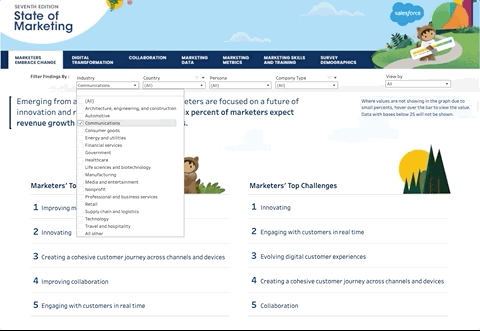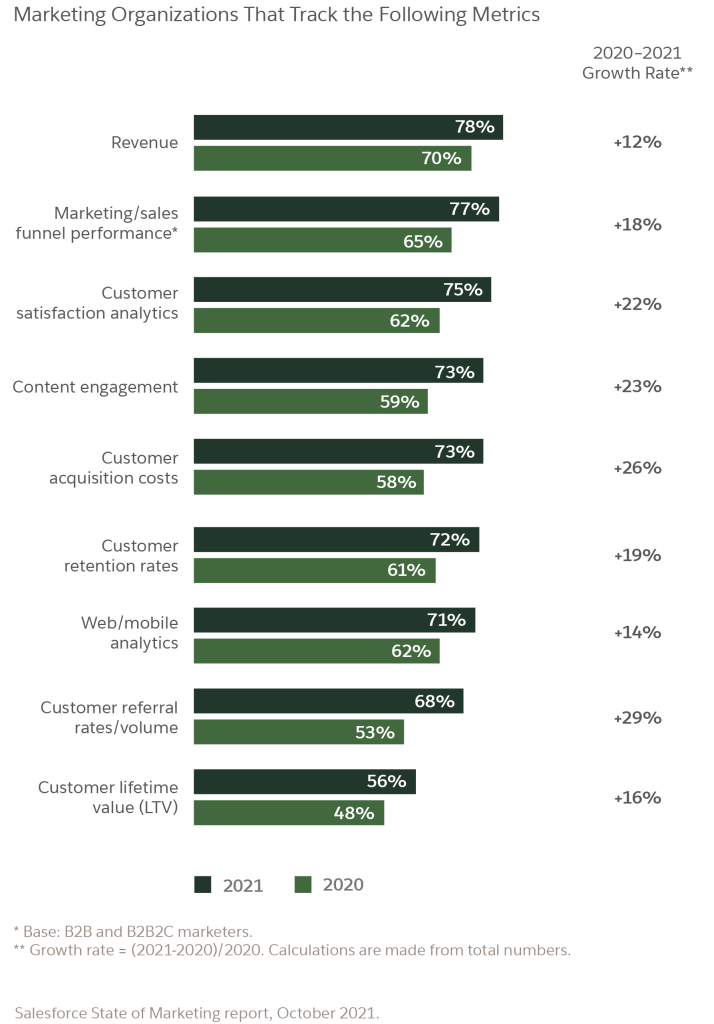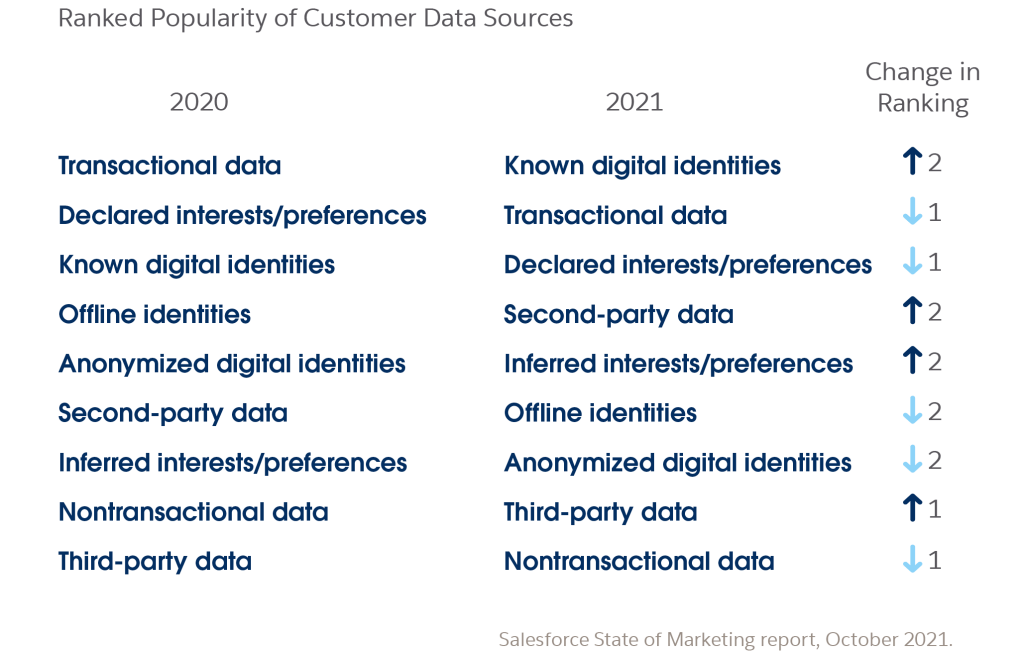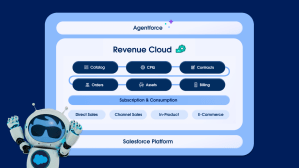Today, Salesforce released the seventh edition of its influential State of Marketing report [registration required].
The report and its companion Tableau dashboards, based on a survey of over 8,200 marketers across 37 countries, offer a snapshot of how strategic priorities and challenges, marketing tactics, and technology are transforming against a backdrop of economic and social change.
Here are a few sample insights:
Amid turbulence, marketers are optimistic about the future
For the vast majority of marketers, the events of 2020 and 2021 have changed nearly every facet of work. From the (overwhelmingly digital) channels they use to engage customers to their internal workflows, there’s not much that looks like its pre-pandemic self.
Yet despite the discomfort that change may bring, marketers remain an optimistic bunch when it comes to the future of their jobs and their business impact. Case in point: 77% of marketers feel that their work provides greater value than it did a year ago, and 66% foresee revenue growth at their company over the coming 12 to 18 months.
Marketers are embracing more (and more sophisticated) metrics
Forced to cater to an even more digital-first base of customers and prospects whose priorities and challenges transformed at breakneck speed, marketers over the past year experimented with the strategies, tactics, and methods with which they engage. As such, the profession became more KPI-oriented as marketers sought to understand what works in a radically changed world — and what doesn’t.
78% of marketers state they have changed or reprioritized metrics due to the pandemic. While marketing KPIs saw increased tracking across the board, customer referral rates, customer acquisition costs, and content engagement saw the biggest year-over-year jumps in adoption.
The value of video as a marketing channel, among others, has surged
A separate, related study recently estimated that 60% of customer interactions would take place online in 2021, up from an estimated 42% in 2019. This rapid acceleration of the shift to digital engagement has prompted marketers to reevaluate which channels warrant increased — or decreased — investment.
Unsurprisingly, as customers and prospects spent time under various phases of lockdown with their devices, digital marketing channels have seen even greater appreciation than before. Video — be it through YouTube, Twitch, or a recorded webinar — saw a particularly large boost in value. With 81% of consumers and business buyers expecting to spend more time online after the pandemic than they did before, there’s little reason not to expect this trend to continue
Even what could arguably be the most analog marketing channel of all — events and sponsorships — is expected to make a permanent digital shift. Marketers expect 40% of their events to be virtual in 2022, with an additional 30% a hybrid of virtual and in person.
As the value of cookies declines, marketers are reprioritizing data sources
As customers’ digital expectations skyrocket, reaching the right target, at the right time, on the right channel is becoming more and more challenging. Marketers are turning to various data sources and associated technologies to inform or even automate their processes. In fact, B2B marketers use an average of 12 customer data sources, and B2C marketers use an average of nine.
As technology providers and governments put increased restrictions — or even outright bans — on the cookies that digital marketers have relied upon, the relative value of those data sources is evolving. Known digital identities, second-party data, and inferred interests/preferences saw the biggest jumps in popularity since 2020, whereas offline identities and anonymized digital identities saw the biggest declines.
Marketers are embracing a work-from-anywhere mentality
Among the many changes businesses experienced during 2020 and 2021, perhaps none is as consequential as the shift to working from anywhere — be it an office, home, or elsewhere. 82% of marketers say their companies are adopting new policies around remote work, with hybrid scenarios generally favored as the expected post-pandemic scenario.
This shift, viewed as a boon for employee wellbeing and productivity, is not without its challenges. For example, 69% of marketers say it’s harder to collaborate now than it was prior to the pandemic. To meet this challenge, 78% of marketers say their organizations have adopted new collaboration technologies during this period.
Learn more
- Download the full State of Marketing report for complete insights [registration required]
- Use Tableau to segment data by region, industry, and more
- Read a blog post by Michael Kostow, General Manager of Salesforce Marketing Cloud for deeper analysis of the survey results
Methodology
Data was collected from a double-blind survey conducted by Salesforce Research via a third-party survey panel in May and June 2021. Respondents include 8,227 full-time marketing leaders in Argentina, Australia, Belgium, Brazil, Canada, Chile, France, Germany, Hong Kong, India, Indonesia, Ireland, Israel, Italy, Japan, Malaysia, Mexico, the Netherlands, New Zealand, the Nordics, the Philippines, Poland, Portugal, Singapore, South Africa, South Korea, Spain, Switzerland, Taiwan, Thailand, the United Arab Emirates, the United Kingdom, the United States, and Vietnam.



















